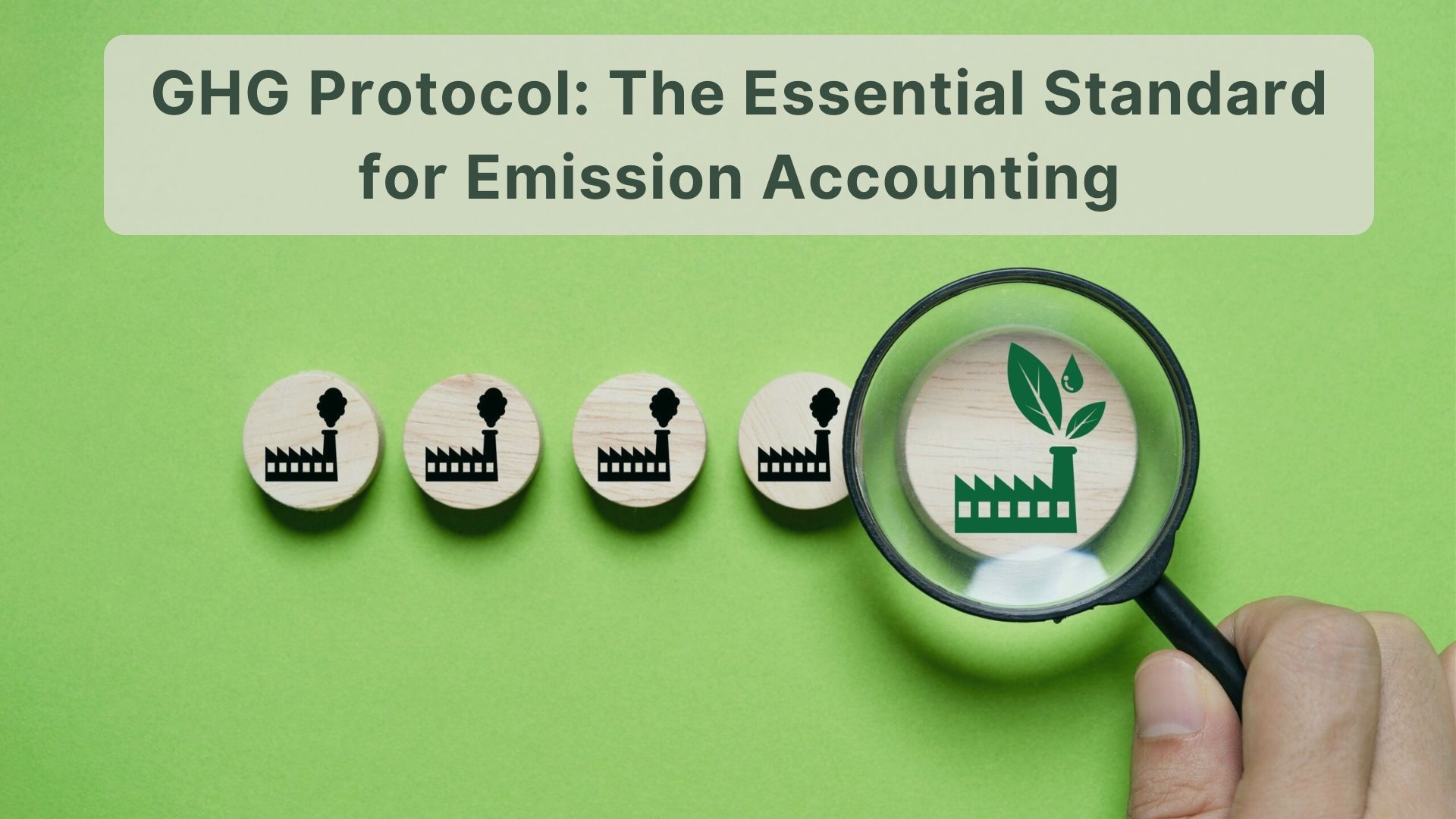Introduction to GHG Protocol for Corporations
Science

Built on a partnership between World Resources Institute (WRI) and World Business Council for Sustainable Development (WBCSD), Greenhouse Gas Protocol is working on comprehensive frameworks that can help corporations, organizations, government, and communities across the globe to measure and manage GHG emissions. Currently, GHG Protocol has 7 standards, including the Corporate Standard which is widely used by companies.
According to the Corporate Standard, these are several things that we have to consider in calculating our company’s emissions.
Type of GHG Accounting
What is the object of our GHG calculation? It can be our company as a whole, a project, or a product.
- Entity accounting: combines emission data from all of the company’s operations, usually compared with emission from the baseline year
- Project accounting: quantifies emission that will be avoided by a project, usually estimated for a future project and compared with a baseline scenario
- Product accounting: combines emission data from all phases of a product or service, usually compared with emission from the baseline year
Organizational Boundary
If our company operates in a facility together with another company, it is important to consolidate - define the portion of emission that belongs only to our company. Generally, this can be determined using one of three aspects:
- Equity share: percentage of emission ownership follows the percentage of equity share
- Financial control: company that has financial control is accountable for 100% of the emission
- Operational control: company that has operational control is accountable for 100% of the emission
Scope of Emissions
Under the Corporate Standard, it is mandatory to report scope 1 and 2 emissions, but optional to report scope 3 emissions (read here to understand the emission scopes). There are 7 types of GHG that should be included: carbon dioxide (CO2), CH4, nitrous oxide (N2O), nitrogen trifluoride (NF3), hydrofluorocarbon (HFC), perfluorocarbon (PFC), sulphur hexafluoride (SF6).
Operational Boundary
In setting an operational boundary, we have to determine which sources of emission to include and classify them into corresponding scopes to avoid double counting. If we are including scope 3 emissions, we have to identify relevant partners along the value chain and communicate with them to obtain emission data. Emissions from an operation could never be reported twice by different companies (double counting) under the same scope 1 or 2 unless divided through consolidation. However, double counting is bound to happen for scope 3 calculation, since a company’s scope 3 emission is another company’s scope 1 emission.
Emission Tracking
Emission should be compared to a baseline to track the company’s progress on emission reduction. Thus, we have to select a base year, the earliest year when verifiable emissions data are available. Recalculation of baseline is necessary when there are significant changes in structure of organization or calculation methodology, or discovery of significant errors. A change is typically considered significant if the difference is above 5%.
Emission Calculation
There are 3 calculation approaches that we can choose:
- Direct measurement: monitor GHG concentration and flow rate using tools, such as with a filter on an exhaust pipe
- Stoichiometric concentration: measure which elements enter and leave the system, for instance the mass balance approach
- Estimate emissions: multiply activity data with appropriate emission factor for the specific activity/fuel used; this is the most common approach
Emission is usually calculated in mass (tons), and then converted into CO2 equivalent by multiplying the mass with global warming potential (GWP). For emission factors, we may refer to data provided by IPCC, GHG Protocol, government agencies, or sector specific organizations.
To learn more about these standards, you can visit the GHG Protocol official site here.
Check out Fairatmos’ Insights page to learn more about sustainability topics.
